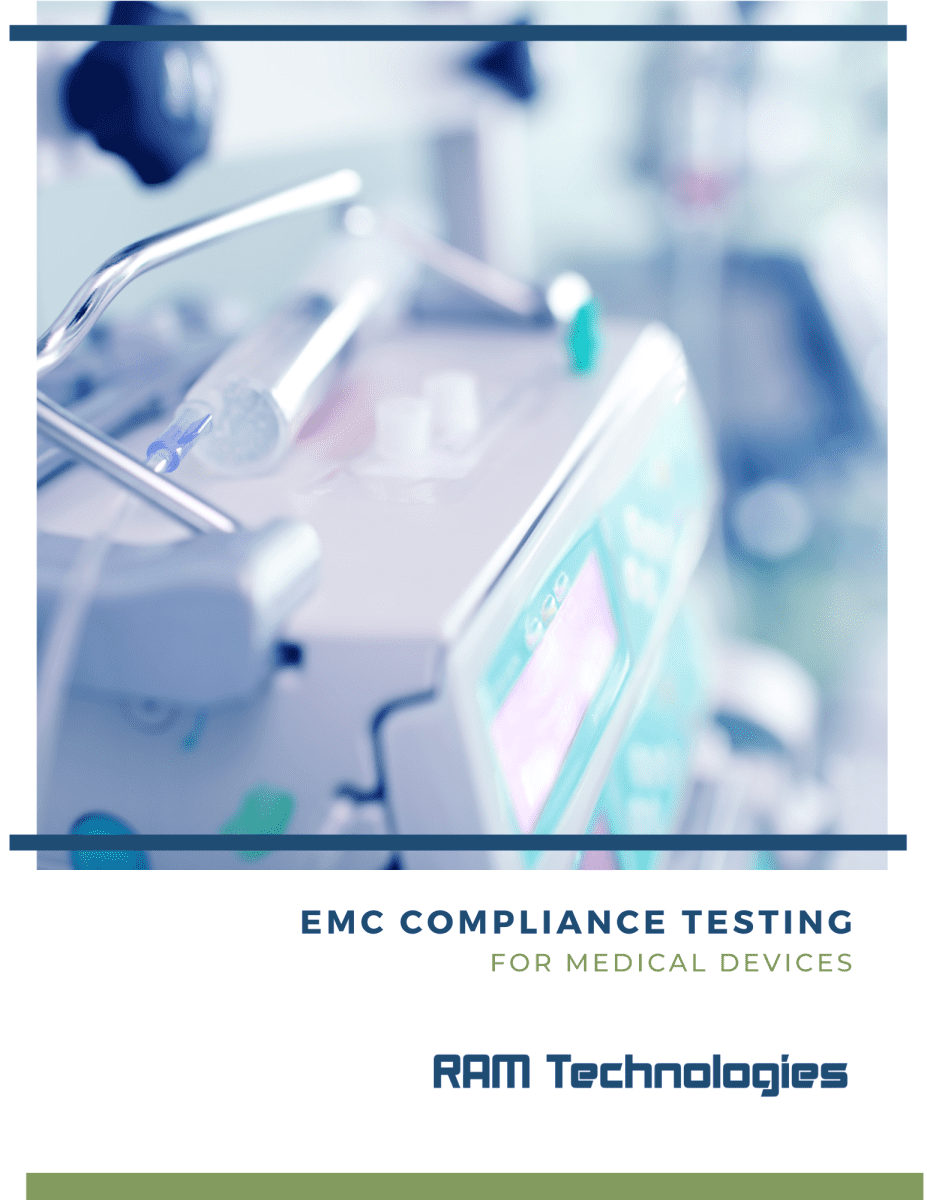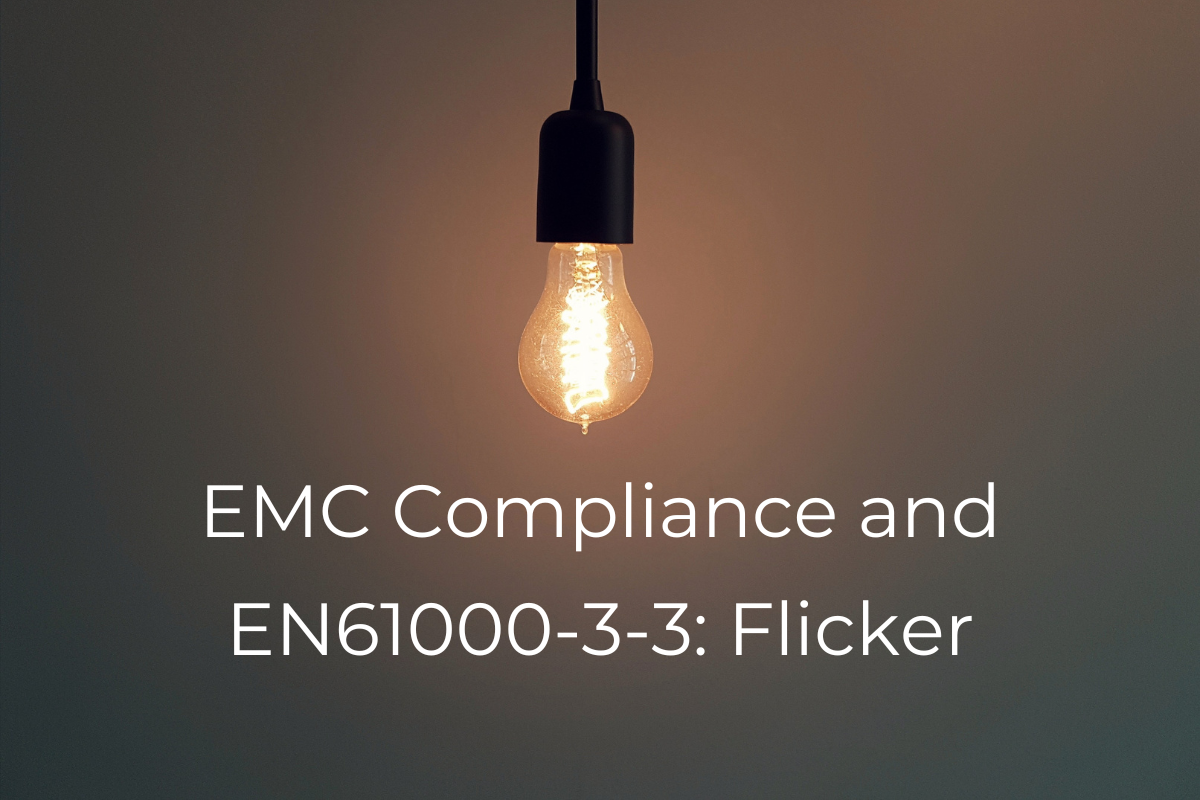Before your medical device can go on the market, it must pass a series of electromagnetic compatibility (EMC) tests. These tests ensure that your device does not emit too much electromagnetic interference (EMI), which can disrupt other devices nearby. They also make sure that your device can withstand EMI from other devices, so it will continue to work properly.
While there are several different EMC standards manufacturers must follow, this blog will cover one in a bit more detail – EN 61000-3-3 (also known as IEC 61000-3-3).
Summarizing EN 61000-3-3: Flicker
Flicker coming from a device is most obvious when lights flash upon use. However, the most important factor of flicker is what’s happening to the voltage in the device itself. This is a sign that there is unsteady voltage going to the components of the medical device and connected items. Unsteady voltage can cause equipment to wear out quicker and/or cause “ghost” readings.
Fluctuating voltage that causes flickering lights can also be uncomfortable during use at best, and unsafe for those with photosensitive epilepsy at worst.
EN 61000-3-3 puts limits on how much voltage fluctuation can be produced by electrical equipment. This limits the amount of flicker that can occur when devices are connected to public low-voltage power supplies. While limits vary depending on the type of device and the country where the equipment is marketed, there are limits set from the 10th harmonic through the 100th harmonic.
How IEC Defines Flicker
The International Electrotechnical Commission (IEC) defines flicker as an “impression of unsteadiness of visual sensation induced by a light stimulus whose luminance or spectral distribution fluctuates with time.” This is really the outcome of an underlying problem. We see the visual sensation because of the voltage fluctuations that cause them.
What Applies Under IEC 61000-3-3
For medical device manufacturers, it’s important to note that this standard applies to electronic and electric devices that use up to 16 amps per phase and connect to public low-voltage power systems without special requirements. The power systems would be between 220-250 volts line to neutral at 50 Hz.
Medical devices do not need to be tested if they aren’t likely to create significant flicker or voltage fluctuations. Opting out might require clarification using device specifications, functional testing, and circuit diagrams.
However, if the device is too “noisy” to be connected to a power grid normally, and fails the IEC 61000-3-3 test, it may be retested to pass the standards for 61000-3-11 instead. Devices that use up to 75 amps per phase and need special configurations to connect to the power grid can be tested in this way.
Standards are still pending for power grids with voltages lower than 220V and/or frequencies of 60Hz.
How is EN 61000-3-3 Tested?
Testing under IEC 61000-3-3 will simulate what voltage fluctuations and flicker a device will have when used on a public low-voltage system. It is performed in a controlled environment using a test power supply that has a defined source impedance. A defined source impedance is a known electrical impediment that simulates the power grid.
If the voltage fluctuations or flicker exceed specified limits, the device under test fails and manufacturers may need to make modifications to ensure the equipment doesn’t interfere with the power grid or other devices.
More details of testing and limits can be found in the Academy of EMC.
Flicker Limits Under EN 61000-3-3
The flicker limits under IEC 61000-3-3 define the maximum permissible value of the short-term flicker severity of a given frequency. These limits are based on the measure of a perceived flicker of a light source, generally a 230V/60W incandescent lamp.
Short-term flicker in tests is evaluated in 10-minute spans, and long-term flicker is measured in a 2-hour span. The standard also measures times of deviation, steady-state voltage, and relative voltage change.
- Pst short-term flicker – less than or equal to 1.0
- Plt long-term flicker – less than or equal to 0.65
- d(t), Tmax – The total time that the voltage change exceeds 3.3% during a single voltage change at the equipment under test must not exceed 500 milliseconds
- dc – The maximum steady-state voltage change must not exceed 3.3%
- dmax – The maximum relative voltage change between 2 half periods can’t go over 4%, 6%, or 7% depending on the type and state of the equipment
What to Know About EN 61000-3-3 Compliance and PSUSs for Your Medical Device
RAM Technologies PC-based power supply units (PSUs) are not directly tested for compliance with standards like IEC 61000-3-3. Only whole medical devices can be certified to the standard. However, we design our units to comply with the standard. This means you can add our PSUs to your device without compliance issues.
You can find information on our downloadable data sheets, available on each power supply page.
RAM Technologies’ power supplies are 60601-1 3.2 certified and meet 60601-1-2 EMC standards. When you’re designing your medical device and need help with a PSU, contact us for details.

Download the EMC Summary
The road to putting your medical device on the market includes many steps, including passing all necessary electromagnetic compatibility (EMC) testing. These tests play an essential role in ensuring your device doesn’t emit a significant amount of electromagnetic interference, which could be via conducted or radiated emissions. Download our guide to EMC compliance to learn more about what medical device manufacturers should consider.
More Resources:
Downloadable Guide to IEC 60601-1
EMC Compliance and EN 61000-4-3: RF Susceptibility
EMC Compliance and EN61000-4-4: EFT Level 3
EMC Compliance and EN 61000-4-2: ESD Level 3



